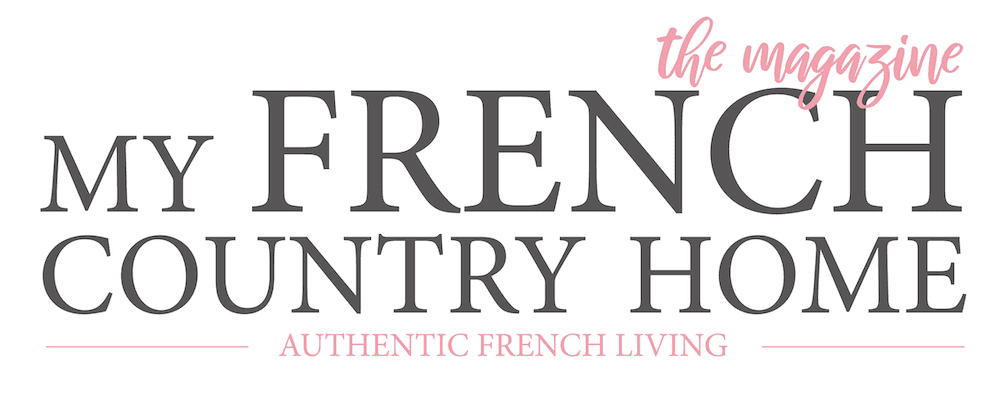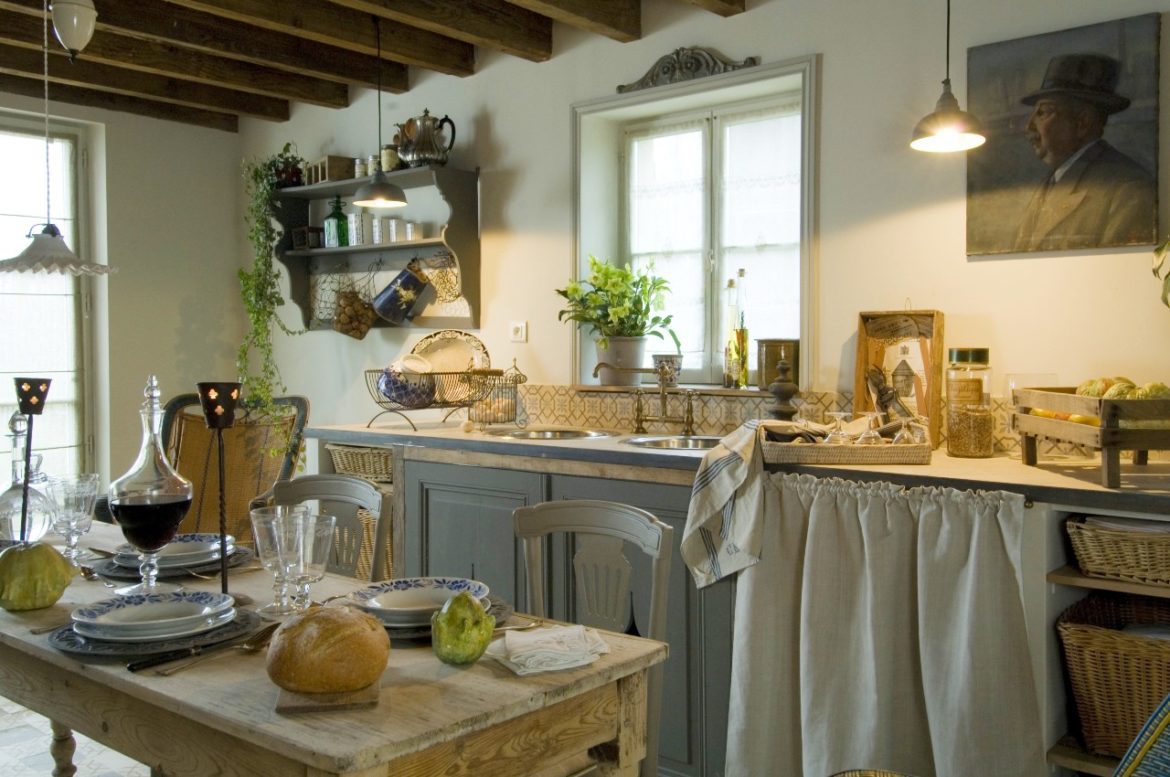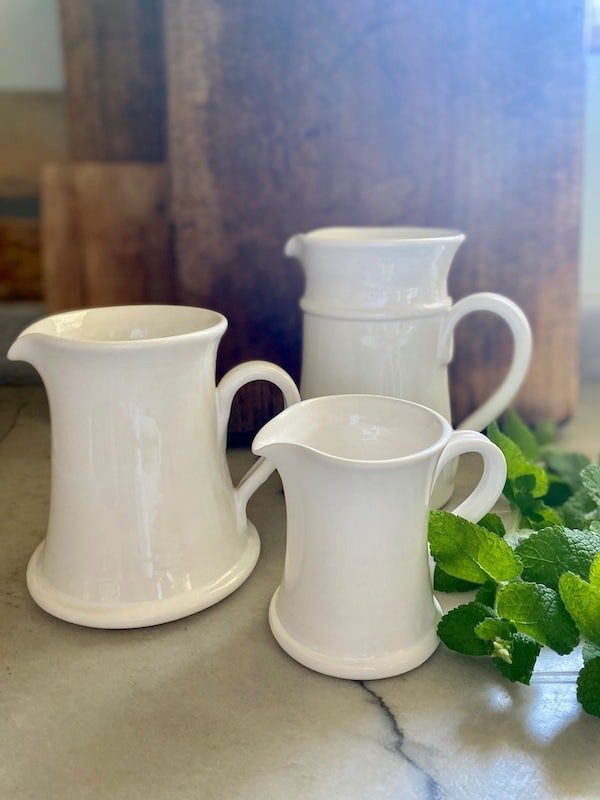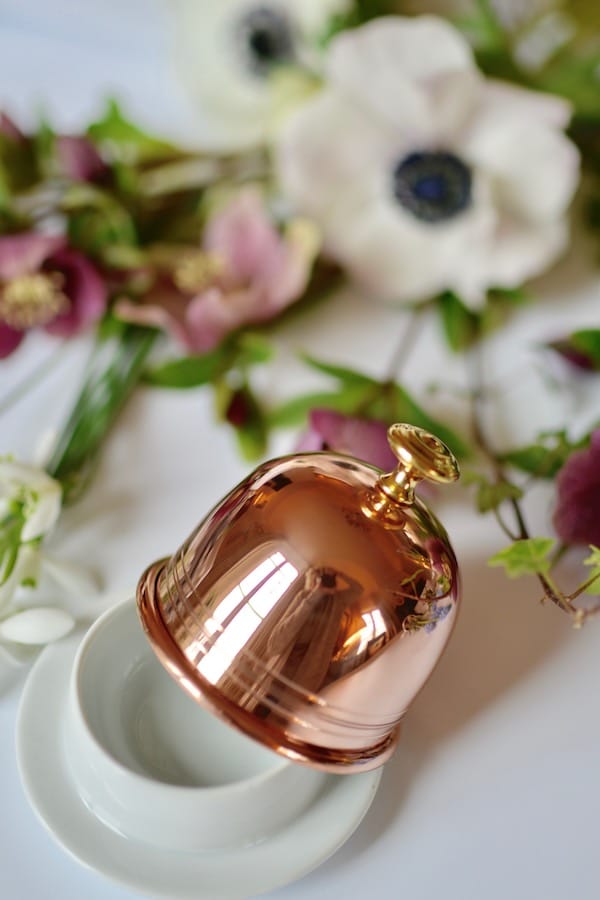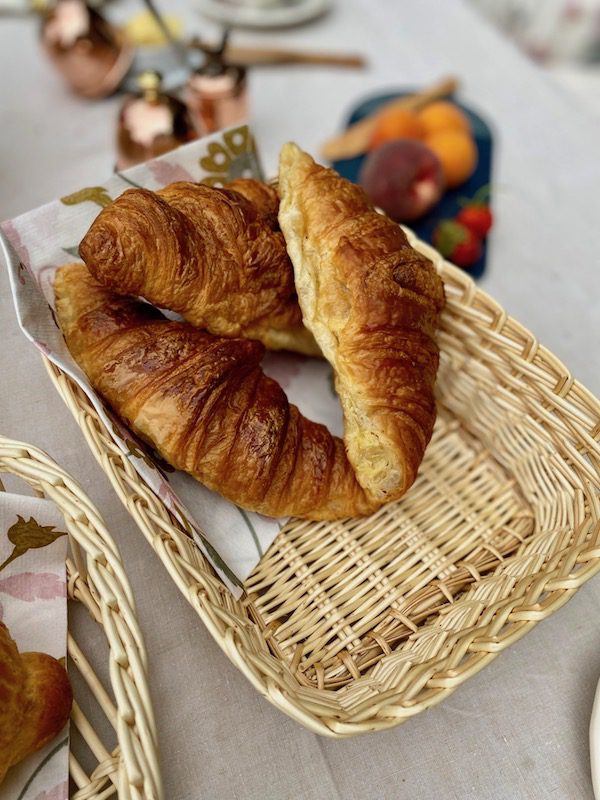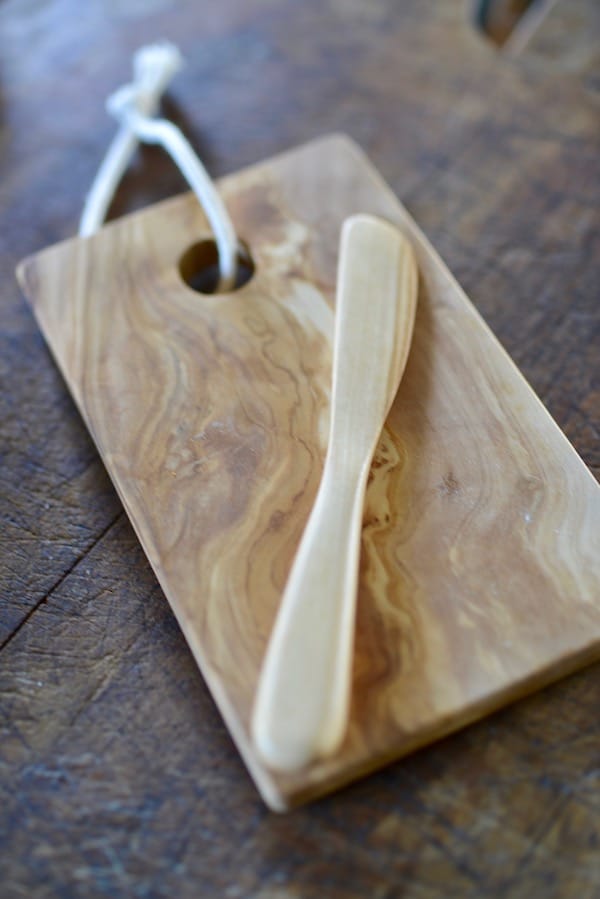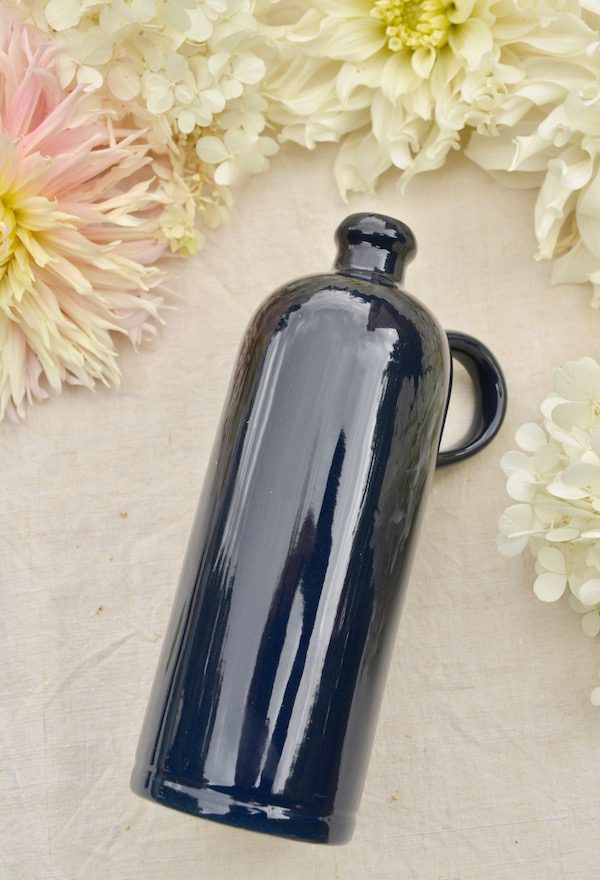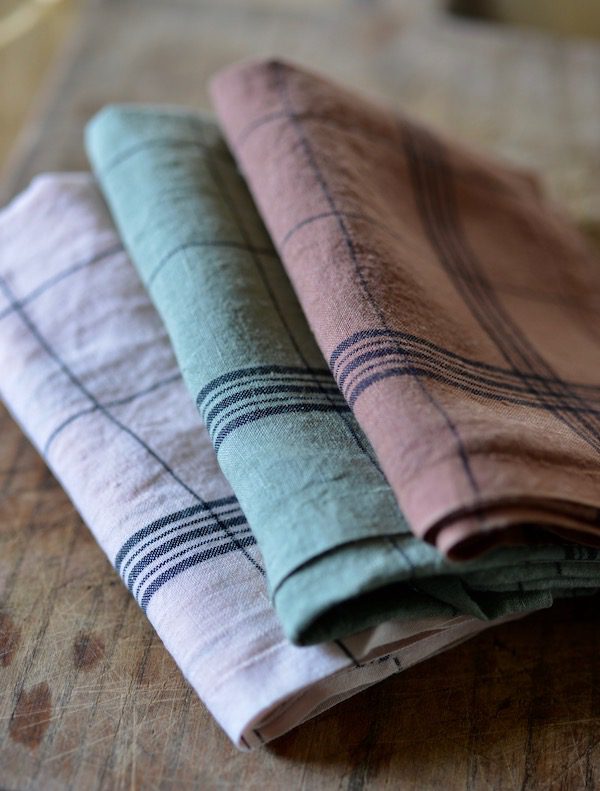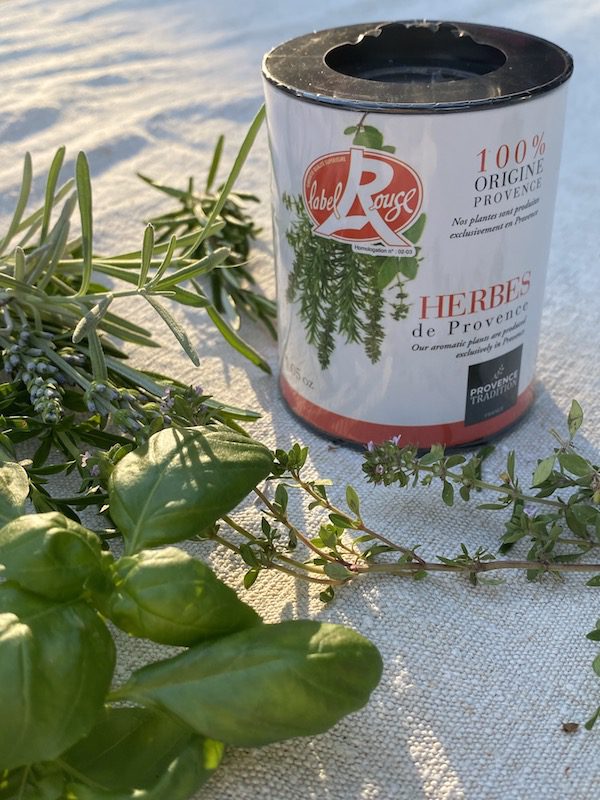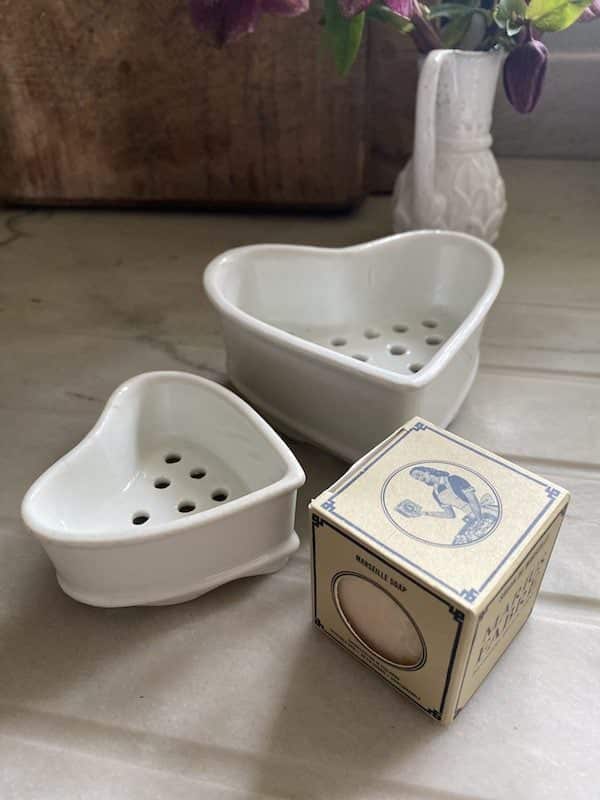Cozy and inviting, the French country kitchen has an aesthetic that is instantly recognizable. While fully fitted kitchens with sprawling marble countertops and seamless cabinetry might be all the rage, the French country kitchen takes a different approach…
My French Country Home decodes the formula that makes up this iconic French interior style.
SUBSCRIBE TO THE MAGAZINE
Neutral color palette
Often, French country kitchens are distinguished by their muted colors which help to give a calming ambiance. Putties, beiges, greiges and taupes make a great base for incorporating other decorative elements.
Choosing a neutral color has the added bonus of making smaller kitchens look bigger!
Plus, in hotter parts of the country, where the buildings are largely made of stone, wall colors are chosen to blend seamlessly with the original materials.
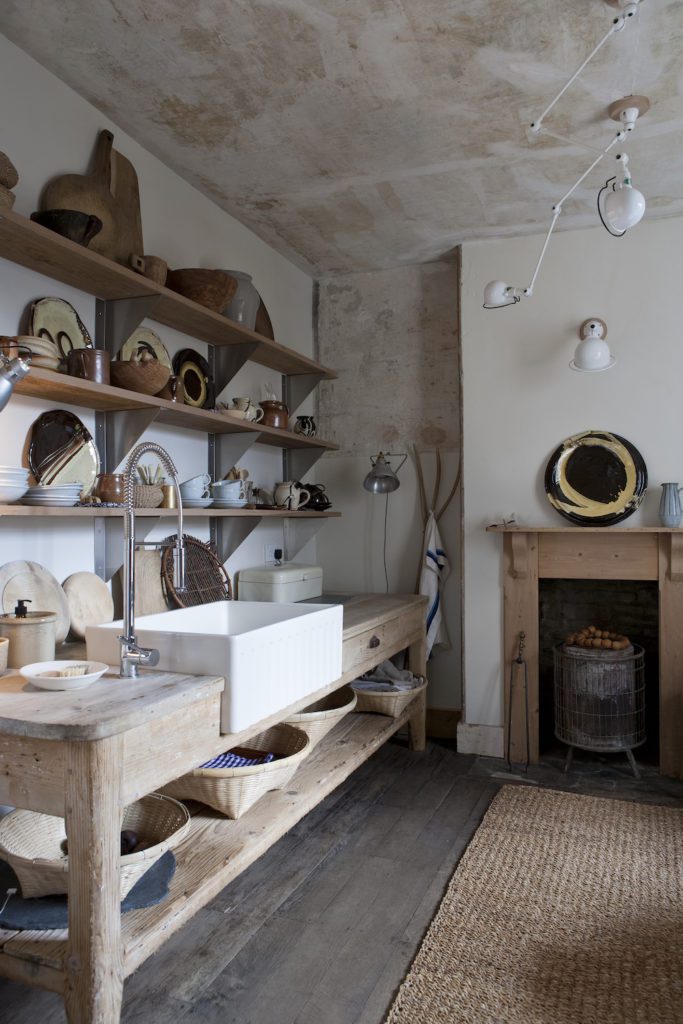
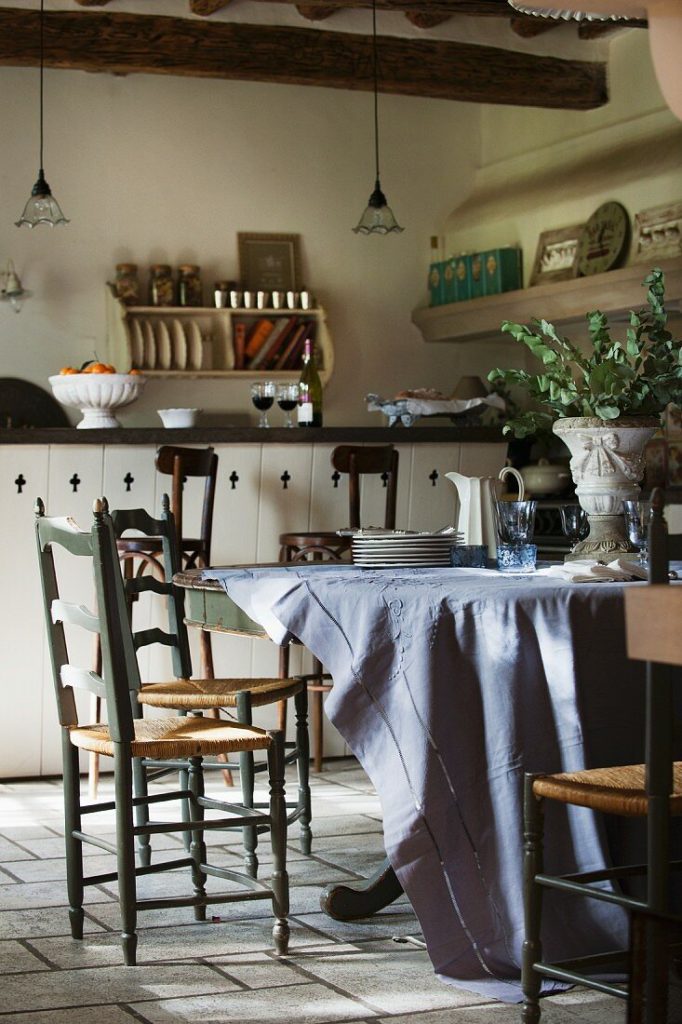
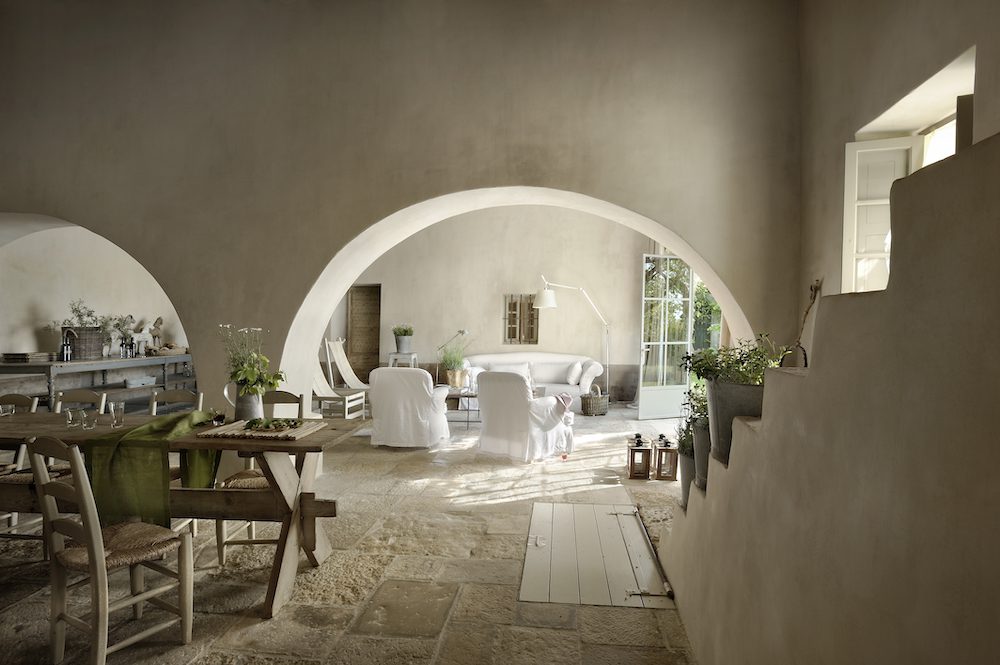
Central table
Typically, larger French country kitchen will almost always include a long wooden table surrounded by plenty of seating for family and friends. Ideal for those lunches that stretch long into the late afternoon!
Chairs either come in a set to match the table or are mixed and matched for a more eclectic vibe.
Tables can be dressed in antique or checkered linens or left as they are. Set with vintage tableware and cutlery, large napkins and glassware, there is no end to the elegant ways that you can decorate them!
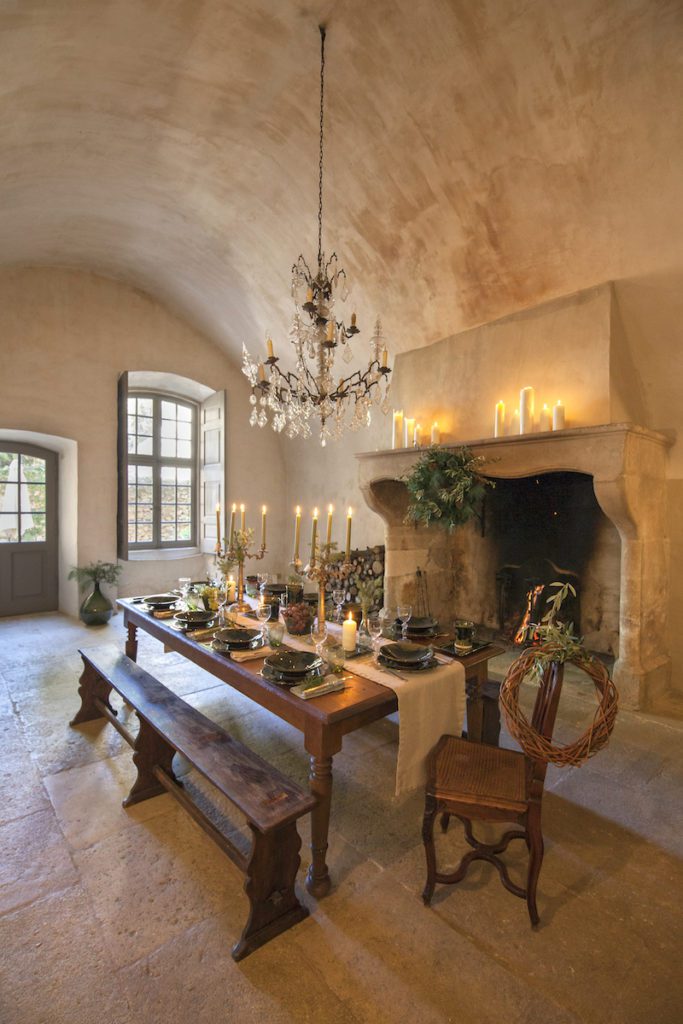
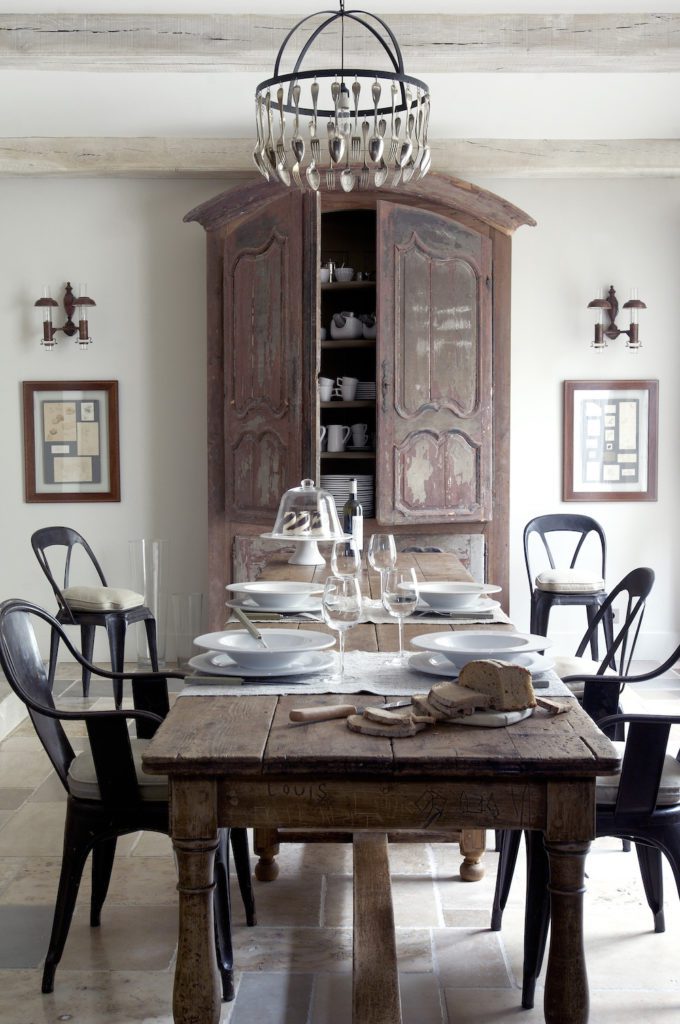
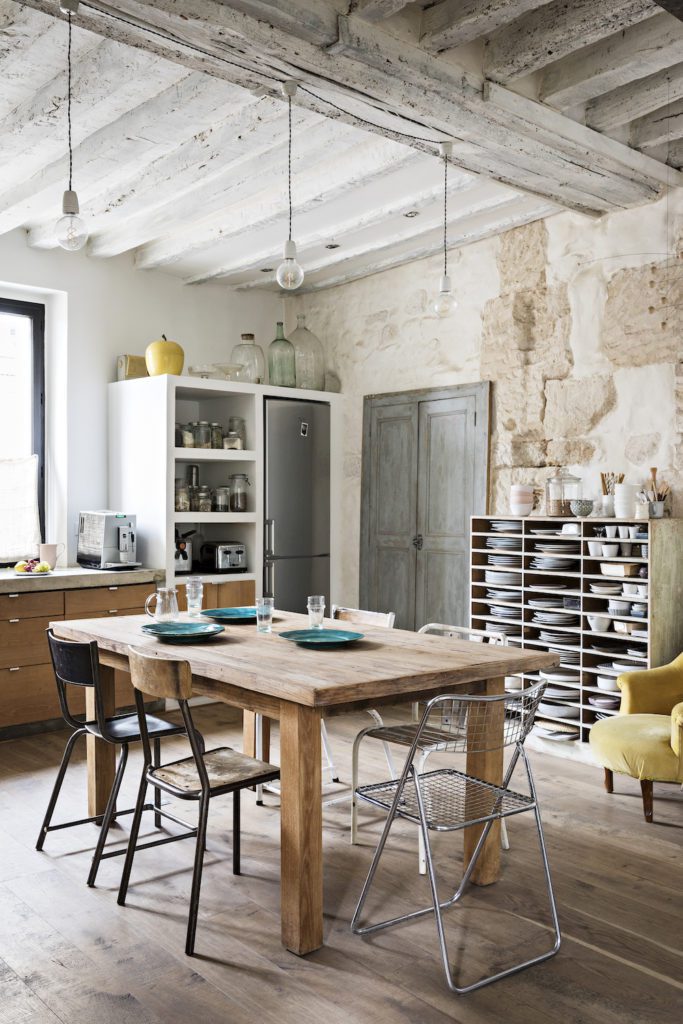
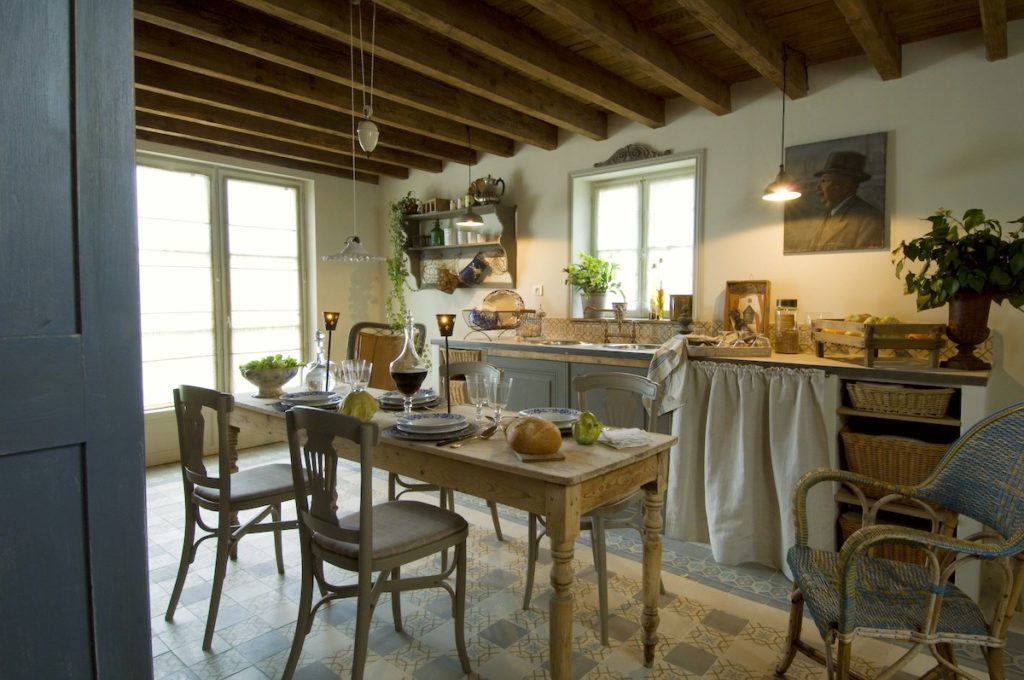
Flooring
Flooring is one of the most traditional parts of the French kitchen. For homes built in the 18th century and earlier, hexagonal or square terracotta tiles line the floor; whereas in houses built in the 19th century, cement tiles are laid in symmetrical, colored patterns. In regions such as Burgundy, you will find thick, well-worn stone floors.
While wooden parquet flooring is commonplace in many French houses, it is rarely found in an old French kitchen chiefly because it does not wear well, and older buildings were often constructed without a solid foundation to offer protection from the damp ground beneath.
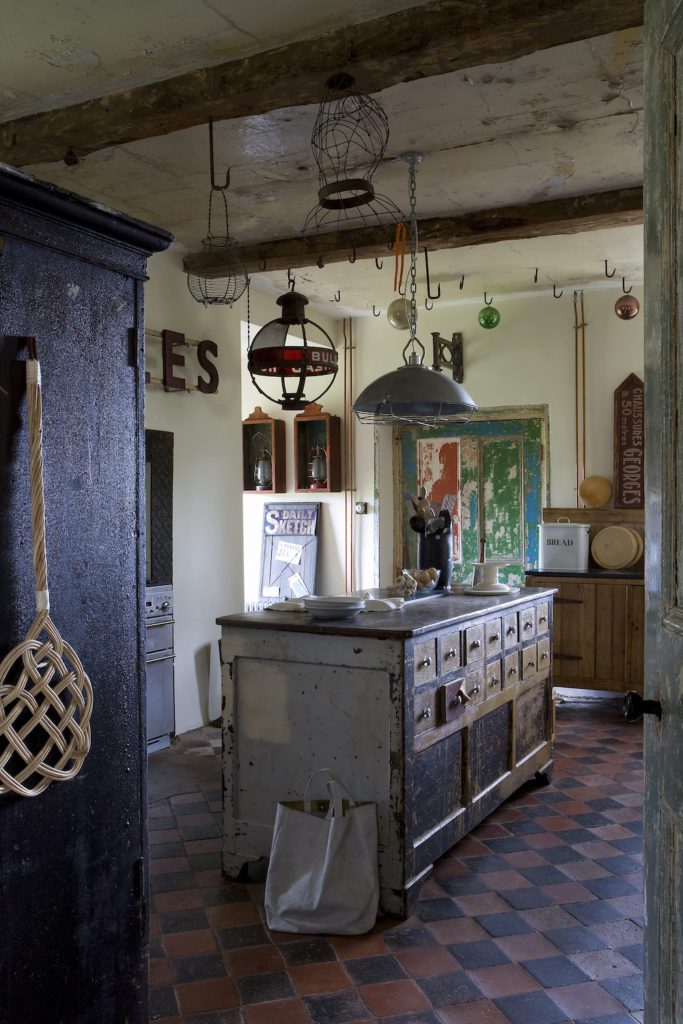
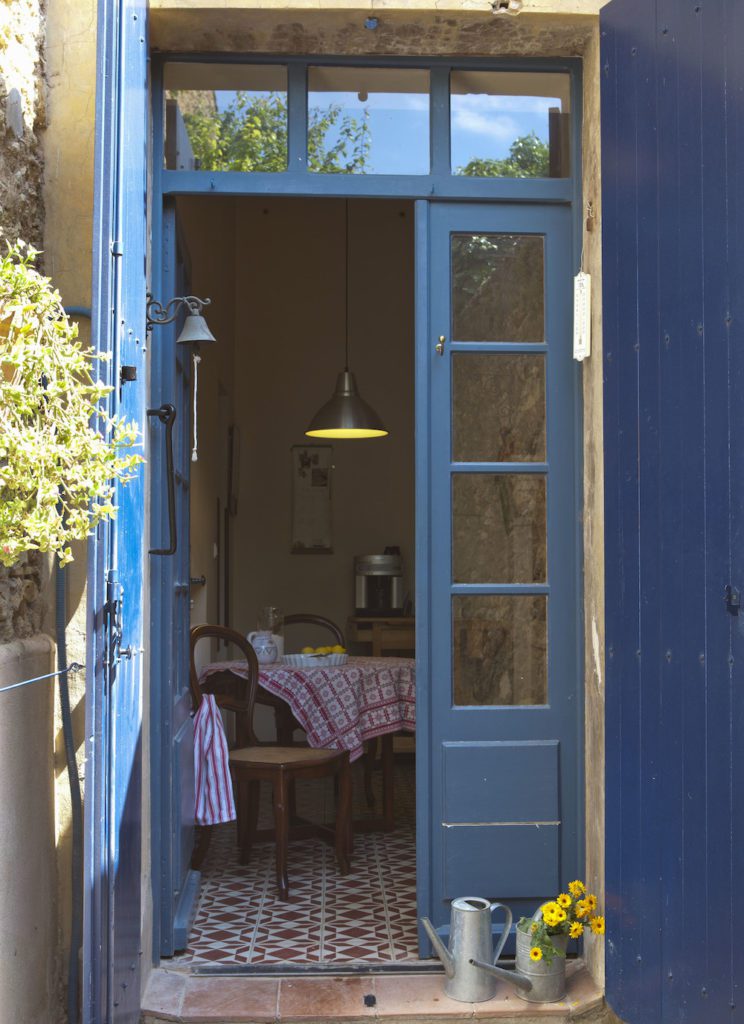
Linen cupboard covers
Due to the size and shape of country houses, there isn’t always room for rows upon rows of symmetrical cupboards.
A tactic to create more storage and also to disguise less attractive parts of the kitchen (like under sink) is to line the area with a fabric (usually heavy linen) curtain. Simple and practical, it gives French country kitchens their own special charm!
This is a great chance to personalize your interiors with some vintage linen. Once you’ve found your perfect fabric, check out our tips on how to clean it here.
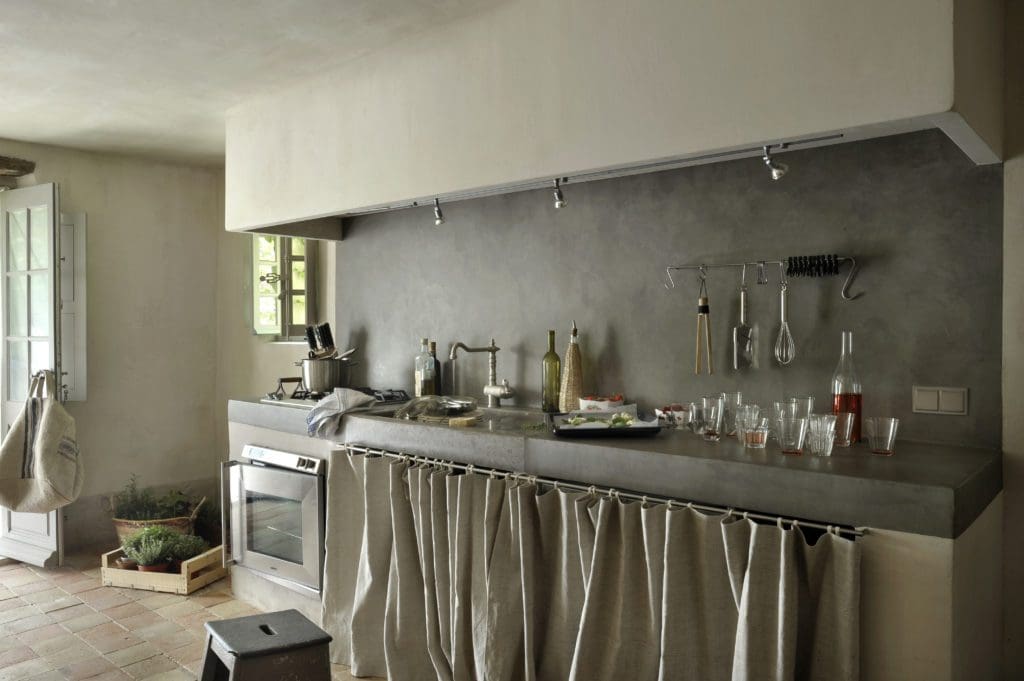

Copper
Kitchen utensils are chosen based on both form and function, and nothing says “French kitchen” like a beautiful set of copper cookware. Either stacked or hung above the stove, copper pans catch the eye and will also stand the test of time. Worrying about how to keep them looking shiny and new? Have a look at our copper cleaning tips here.
Antique copper molds, once used for jellies, cannelés or terrines, are also fabulous to decorate with.

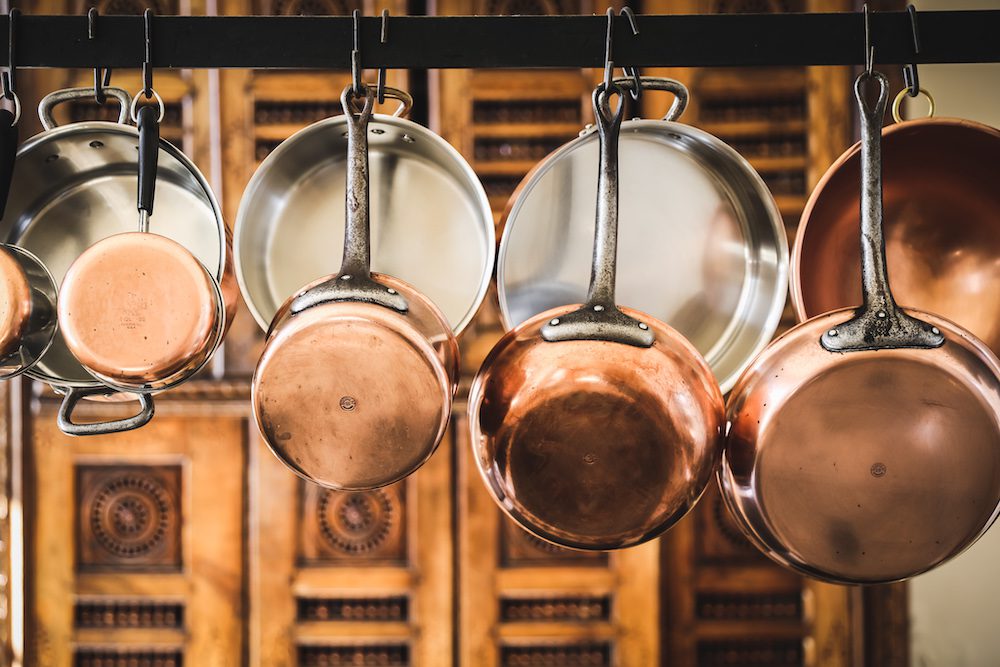
Zellige tiling
A style that hails from Morocco, zellige tiles are traditionally handmade using non-refined natural clay extracted from the Fez region. A glass enamel is applied to the fired clay which gives a glossy and hardwearing sheen.
These checkered tiles are sometimes positioned as backsplashes behind stoves.
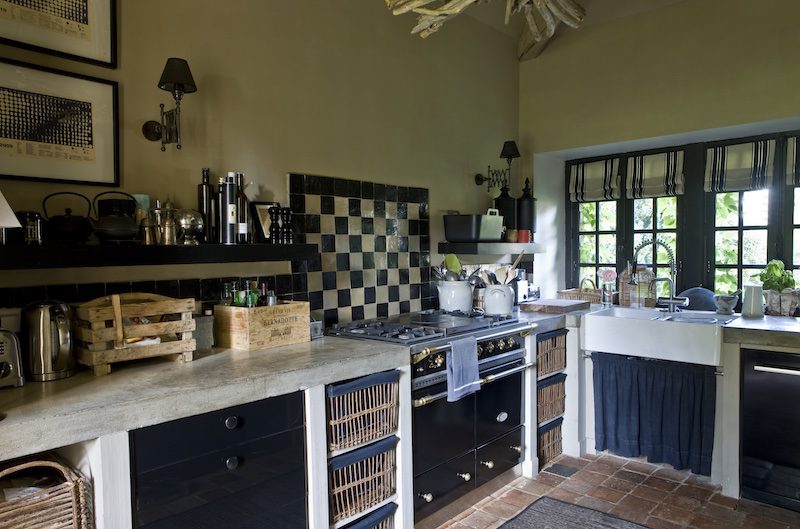
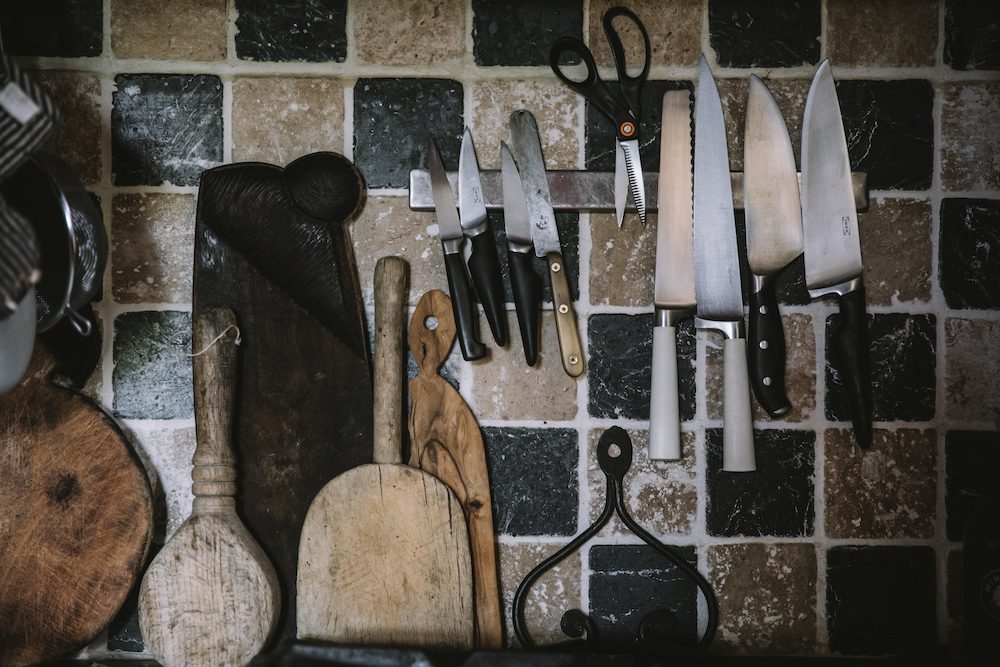
Storage
When the proportions of country rooms might make fitted cupboards impossible, owners opt for large armoires (with or without doors) to showcase tableware and glasses.
This adds an element of decoration to items that would normally be stowed away. Organized into colors, shapes, purpose, size… the categorization options are endless!
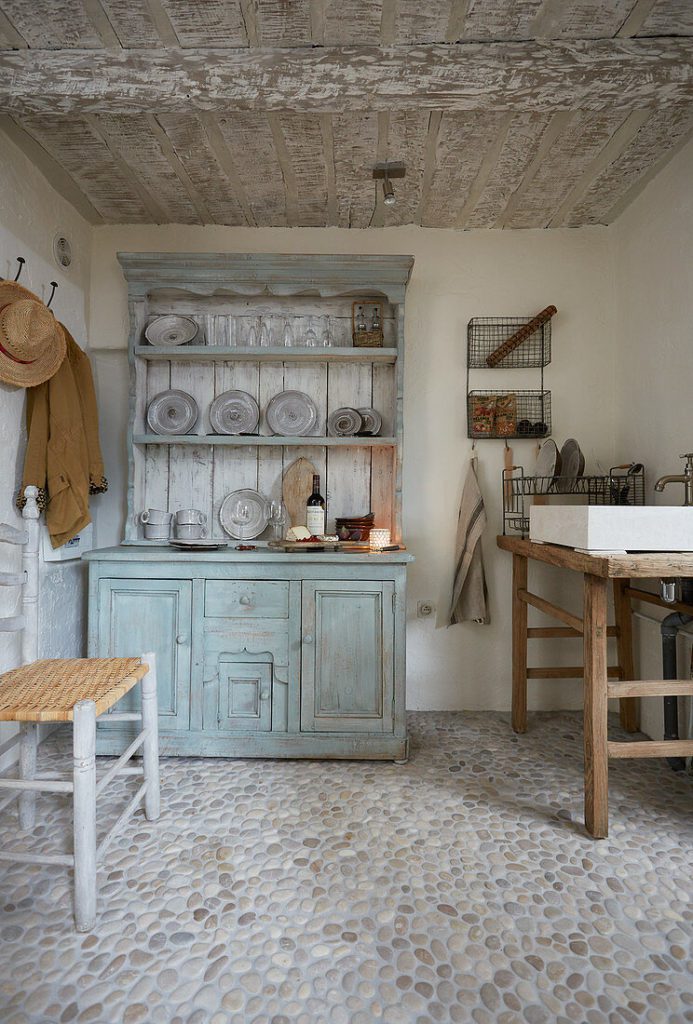
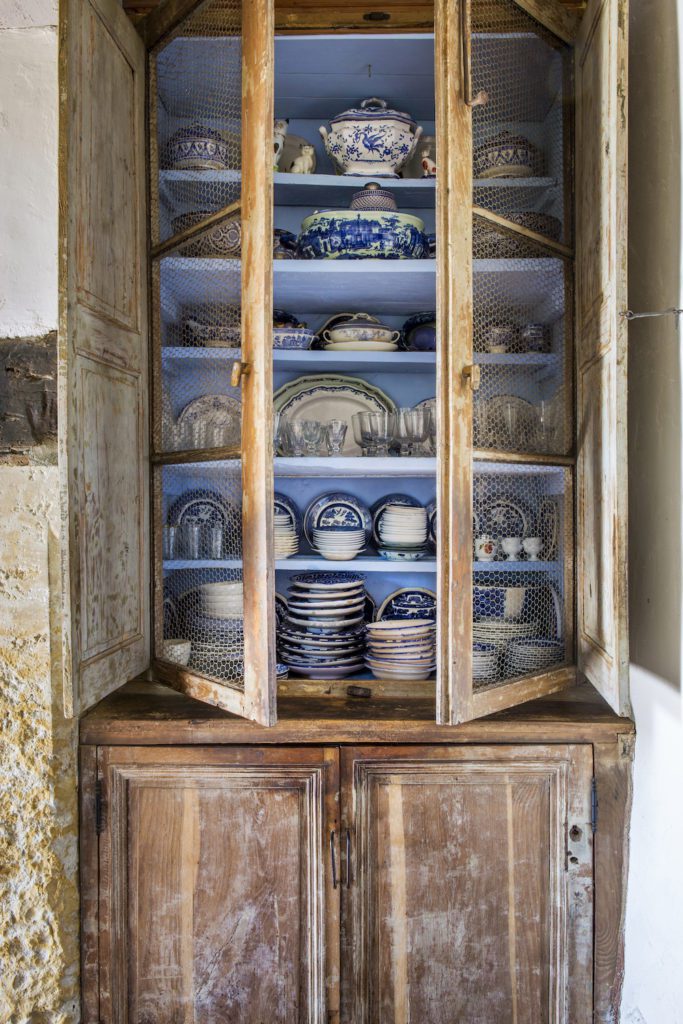
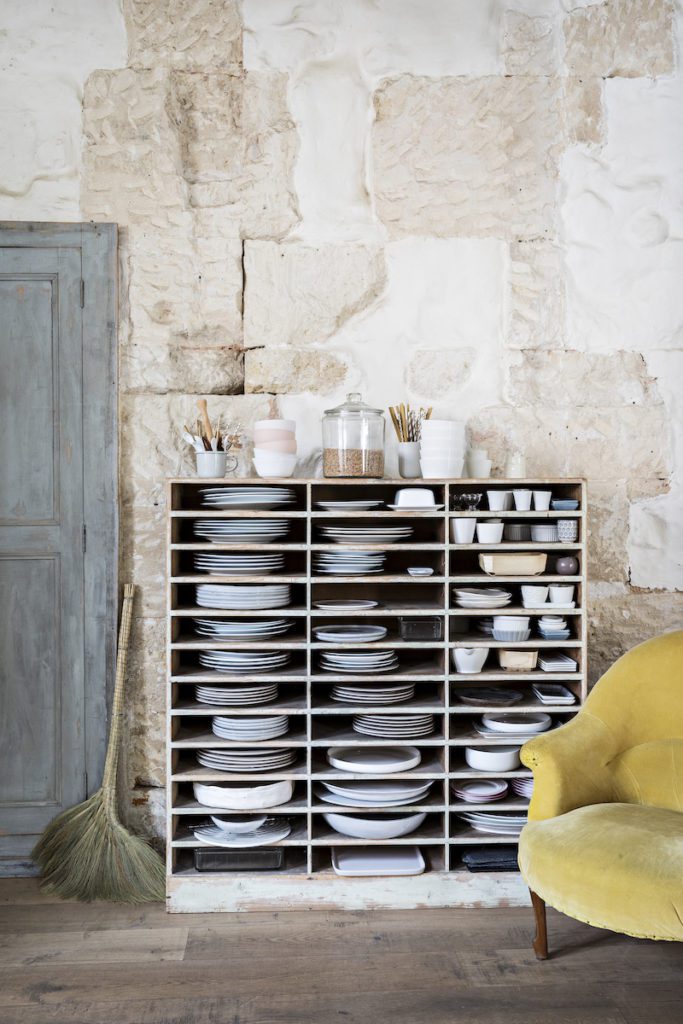
Accessories
A typical French country kitchen is nothing without its accessoires!
Fans of the “rustic” look will confirm, wood is a prominent material. Aside from the table, there are plenty of wooden elements: cutting boards, serving utensils; seating in the form of stools, chairs and benches; bowls, corkscrews, butcher blocks.
There are the wire or wicker accessories — either hung up or lining work surfaces — useful for storing garlic, onions, fruit and vegetables.
Shelves are lined with various paté molds, ceramic oil dispensers and glass carafes or Le Parfait bocaux jars — ideal for holding preserves and dried goods like rice or coffee beans. Other glass or earthenware pots can be used to hold cutlery.
Think beautiful, think practical!
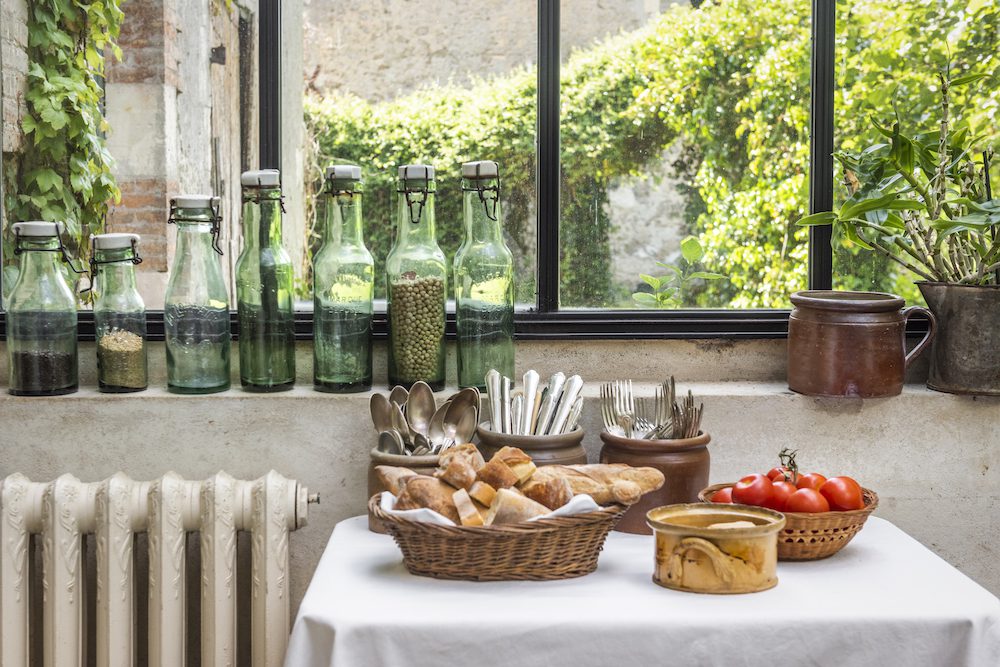
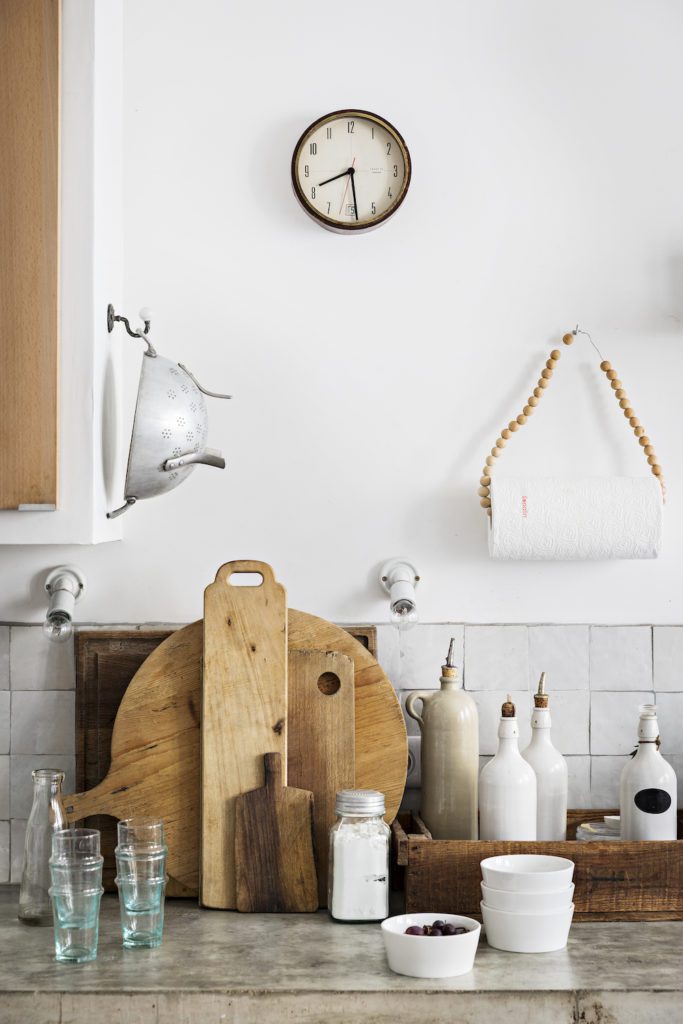
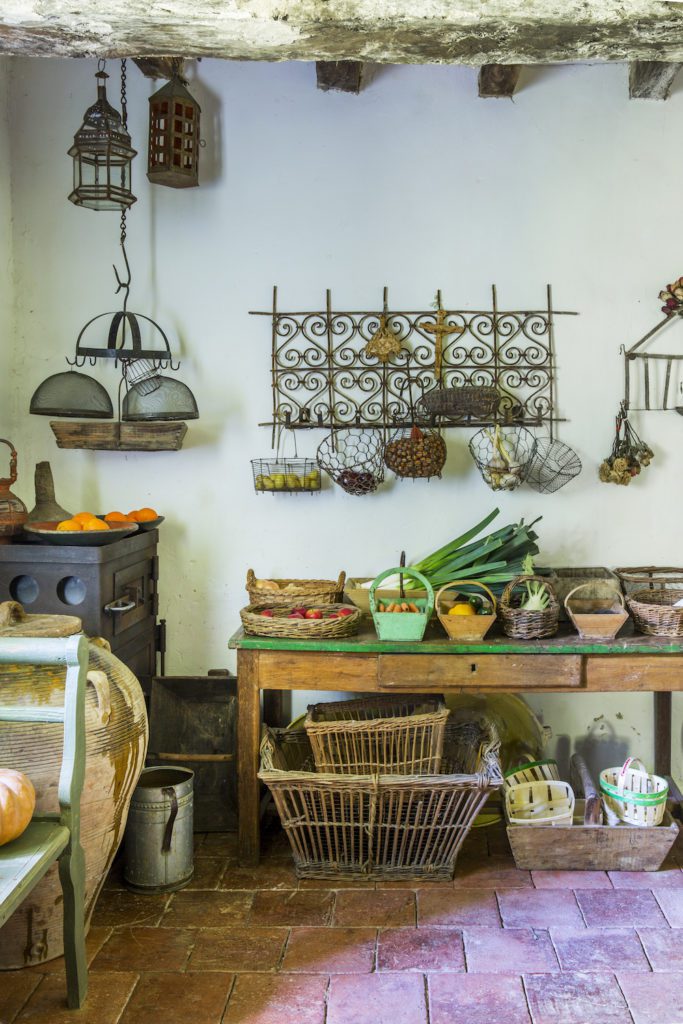
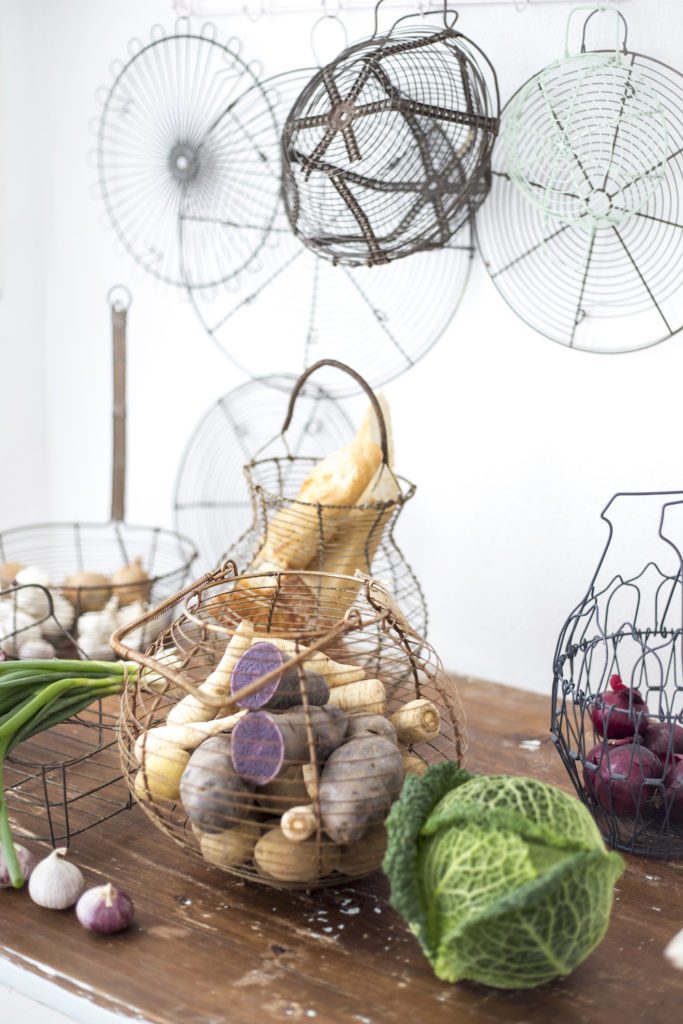
Whichever of these stylistic elements you choose to include, remember the essence of the French country kitchen as inviting hubs, that offer a beautiful space in which to relax and spend time.
Above all else, the French country kitchen is to be enjoyed and treated as the heart of the home!
